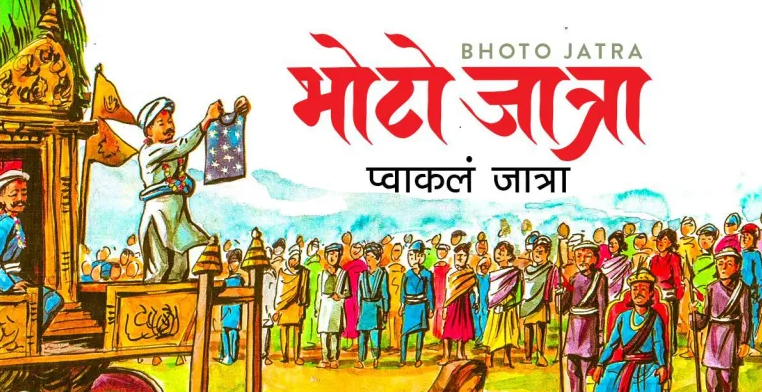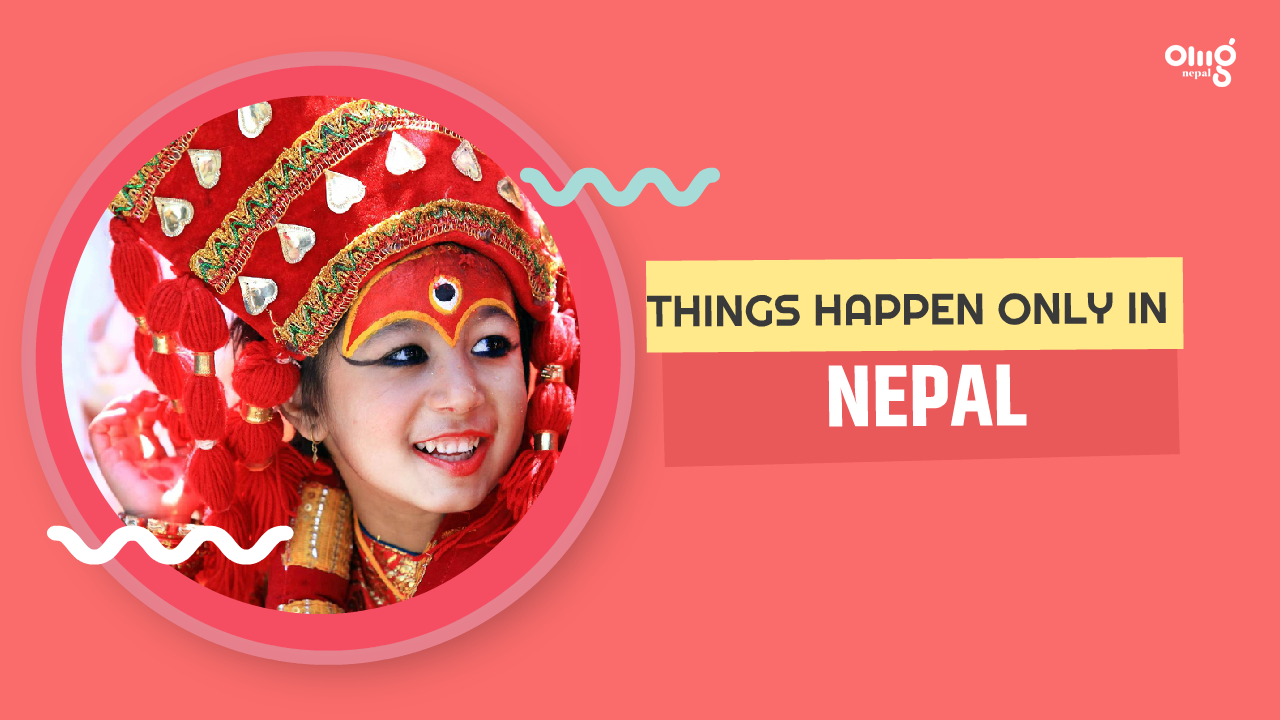After a month-long festival of the Rato Machhindranath, on the last day, Bhoto (golden vest) is revealed to the crowd. The festival comes to an end as the chariot of the deity is pulled up to Jawalakhel of Lalitpur.
An annual cultural and religious ritual of displaying the golden vest is believed to be of Nagraj, the serpent king. And the story behind the vest goes something like this.
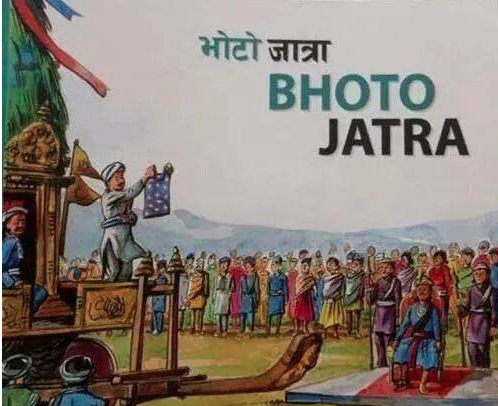
“Long ago, in Kathmandu valley, there was a lake named Taudaha. In the lake lived the king of all snakes, a half-snake half-man God named Karkotak. This story begins with an ailment Karkotak’s wife had one day. She complained to her husband about the pain in her eye. So, in order to heal his beloved wife of the ailment, Karkotak began his journey to Bhaktapur, to visit a healer, who also happened to be a farmer. Reaching him, Karkotak requested, “O Healer! Come with me to my palace, my wife’s eye is in pain and I need you to fix it. I promise you will be rewarded handsomely for your services”. The healer agreed and went with Karkotak back to Taudaha Lake. Upon arriving, Karkotak caught hold of the healer farmer and jumped into the lake, and with his godly powers, made the mortal able to breathe underwater. They arrived at the opulent palace, and the healer began to work on the queen’s eye. With medication, he was able to heal the queen of her ailment.
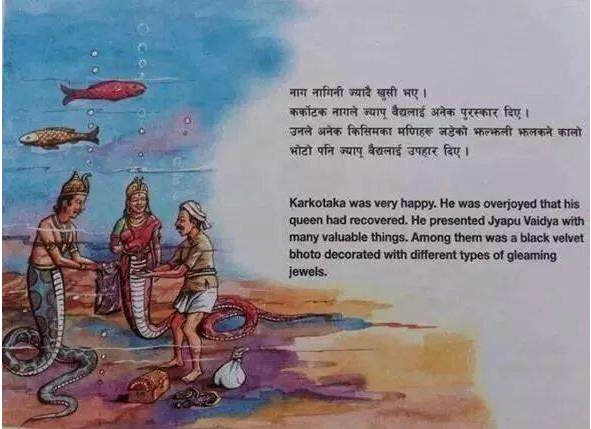
The snake-king became very happy, and as promised, he gave gold and silver to the healer for his service. Among those riches was a black Bhoto encrusted with bedazzling diamonds.
The farmer wore that Bhoto everywhere he went, which caught the eyes of everybody in the valley. And when I say everybody, I mean everybody. One day, a ghost saw the farmer wearing the Bhoto and he began to turn green with envy. Without the farmer noticing, the ghost began to follow him everywhere and his actions proved rewarding when one day, the farmer put aside his diamond-encrusted Bhoto to work on his farm. Seizing this opportunity, the ghost stole the Bhoto and ran away.
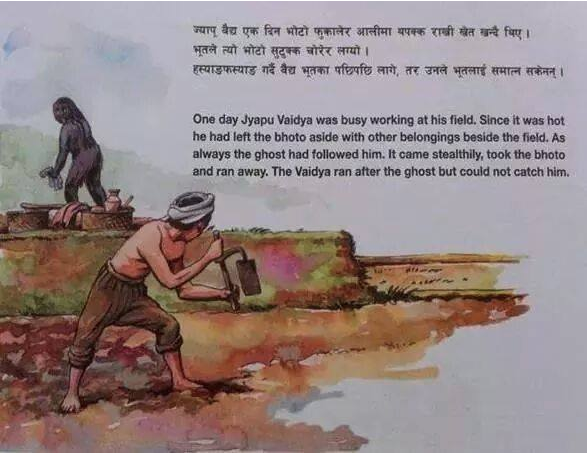
“Hay! Come back here!! That’s mine!” cried the farmer as he chased after the ghost. The lights from the diamond shone off and made the ghost visible for a few seconds before he vanished again. The farmer was then left chasing the sudden komerabi of light that was given off by the diamonds, but no matter how hard he tried, the farmer could not seem to catch the thief.
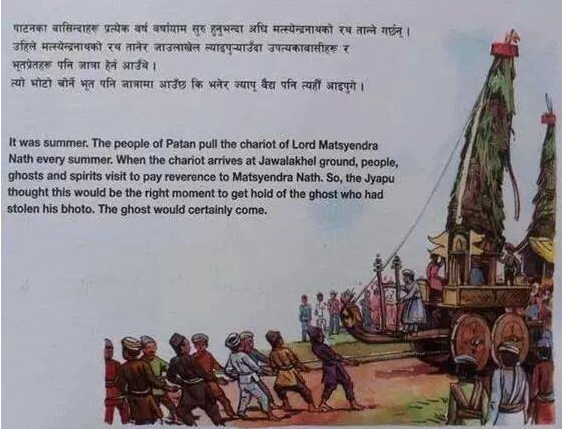
The sun went down, and twilight came. Running all over town after the ghost, the farmer came across the wide planes of Bhaktapur, where the festival of the Red Rain God, Machhindranath, was going on in full swing with people pulling the giant chariot to a stop there. “The whole valley is here, celebrating, and so, the ghost must also be here somewhere”, thought the farmer. Just then, as he managed to finish this thought, he caught sight of the light from the diamonds being reflected by the last dying sun. Sneeringly, very quietly and discreetly, he sneaked behind the ghost who was indeed watching the festival and caught hold of him.
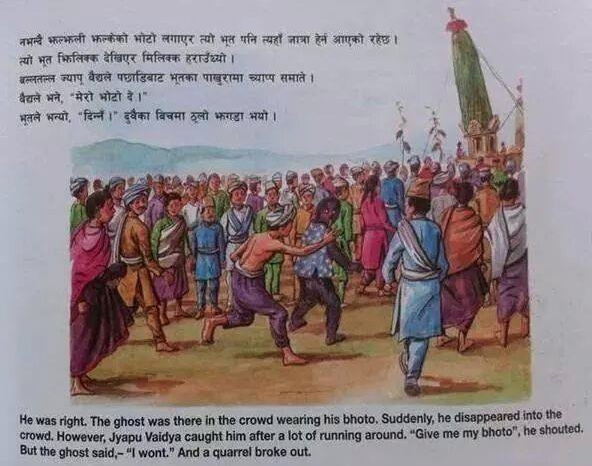
“Give me back my Bhoto!” demanded the farmer. “NO!” screeched the ghost. And thus, an argument ensured.
Coincidently, the chariot of King Gunkampdev was being driven there; the king had come to watch the festival. The guards of the king got hold of the arguing farmer and the ghost and presented them before the king. “They were disturbing the peace here”, they said.
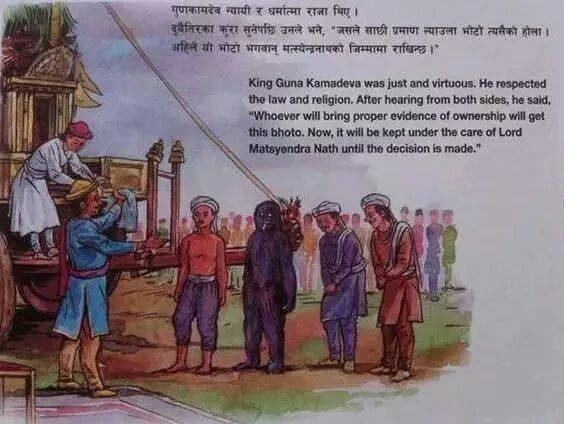
Now, King Gunkampdev was a fair and just king and wanted to know both sides of the story. The farmer went first, “Your majesty, this is my Bhoto. This imbecile ghost stole it away from me while I kept it aside to work on my farm. This Bhoto is a reward I got from the snake-king Karkotak for helping his ailing wife. This is my Bhoto!” said the farmer.
Then, the ghost spoke, “Your Excellency, he is lying. This Bhoto is mine. I found it on the side of a road, discarded and unused and so I took it. It is mine!”
Listening to both sides of the story, the kind made a decision. “The possession of this Bhoto shall be with the priests of the Machhindranath chariot until either of you can show me some concrete proof of the Bhoto belonging to either of you”.
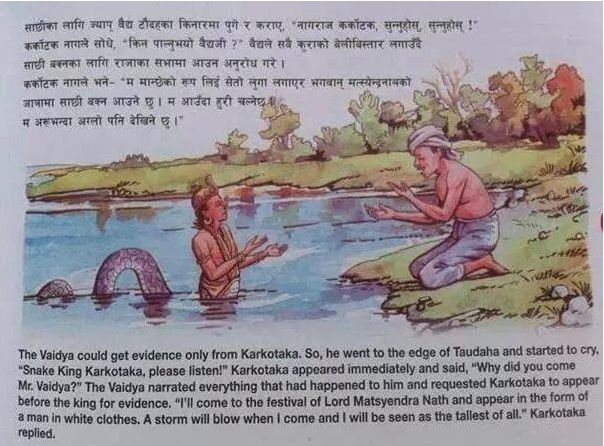
And thus, the farmer went back to Taudaha Lake to confront Karkotak the Snake-king about everything that went down. He requested the snake-king to come back with him as a witness and to provide the proof the king wanted.
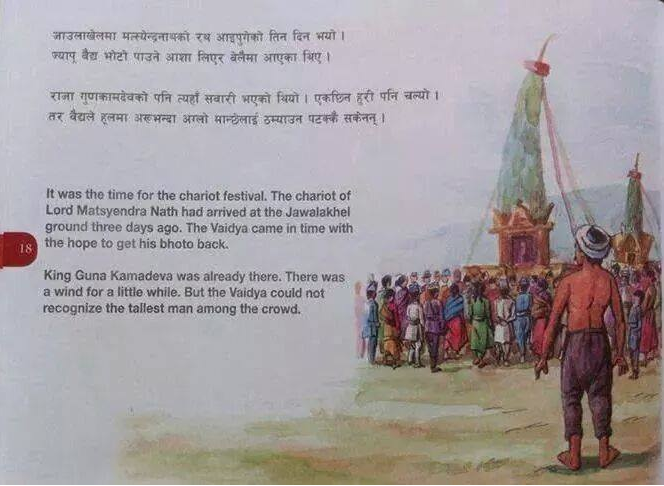
“Alright, I will come as your witness. Be on the look-out for me. There is going to be a storm when I arrive. Also, I will be taller than the rest of the people there”, said Karkotak. The farmer went back to the festival and waited there for three days. At the end of the third day, people were starting to go back home. The festival was coming to a close. Try as he might, the framer could not locate the snake-king among the crowd. The wind blew a bit more furiously, but there was no storm. And so, the priest at the Machhindranath chariot displayed the Bhoto to the crowd a final time during the festival. “Who does this Bhoto belong to?” he asked the crowd, displaying it from all the four corners of the chariot. “Who does this Bhoto belong to?”
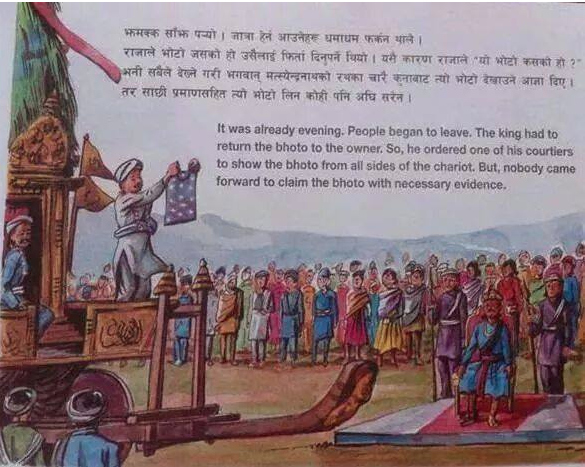
But none came forward with any proof. And so, the tradition of Bhoto Jatra began, with the displaying of the Bhoto like this to the crowd every year, the priests waiting for someone to come forth and claim the Bhoto with concrete proof that it does belong.“
